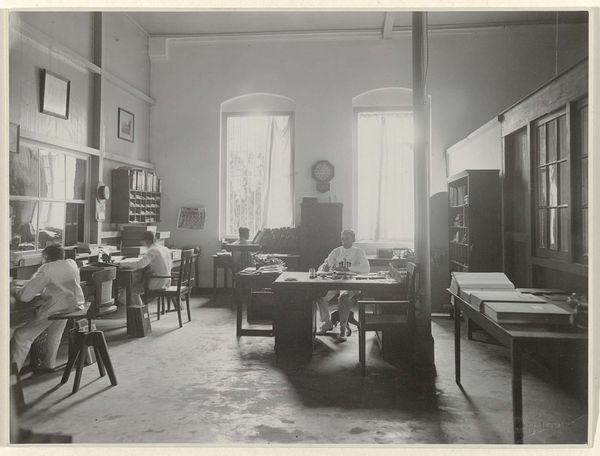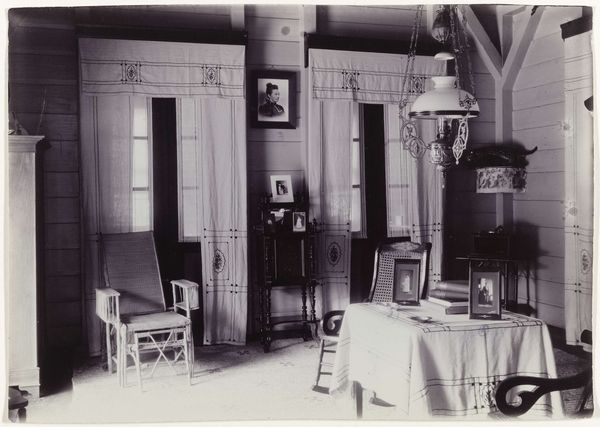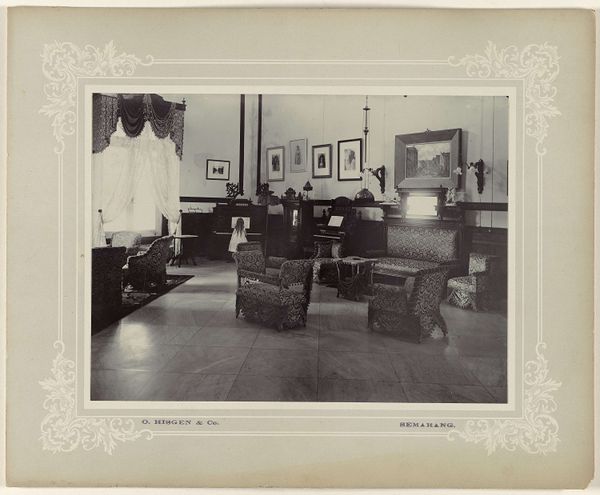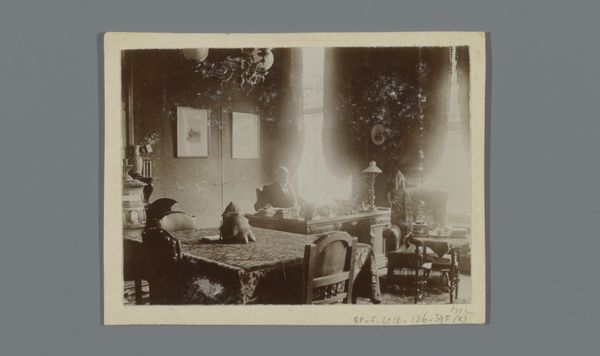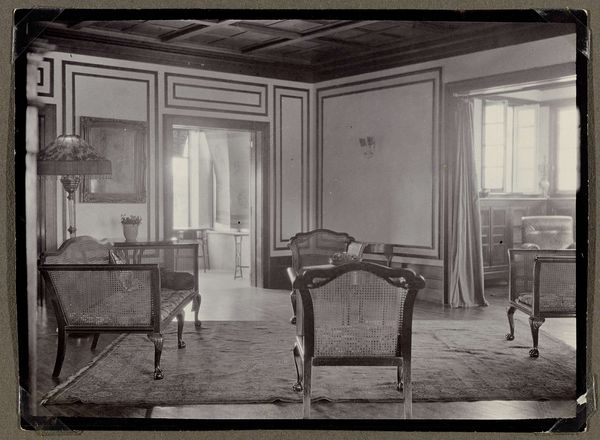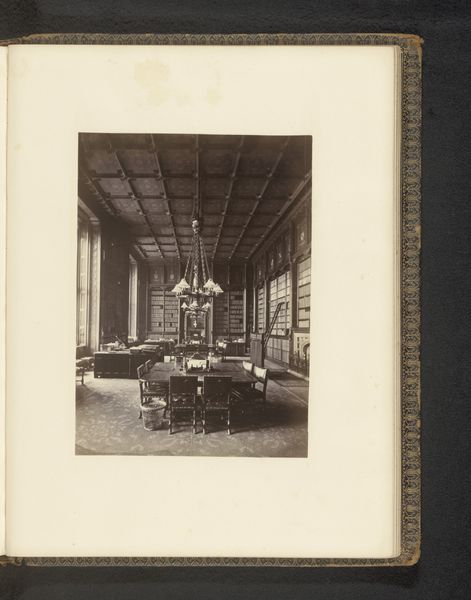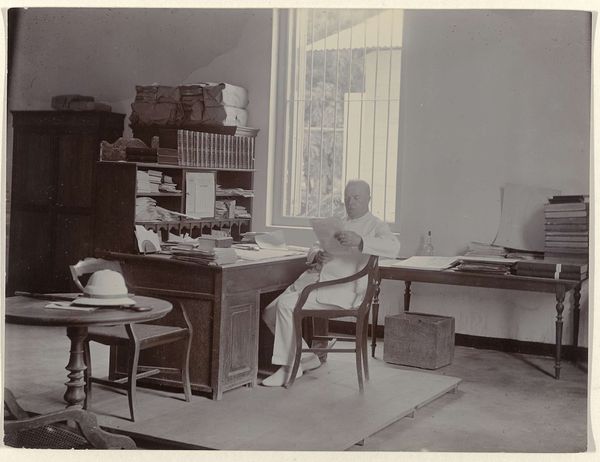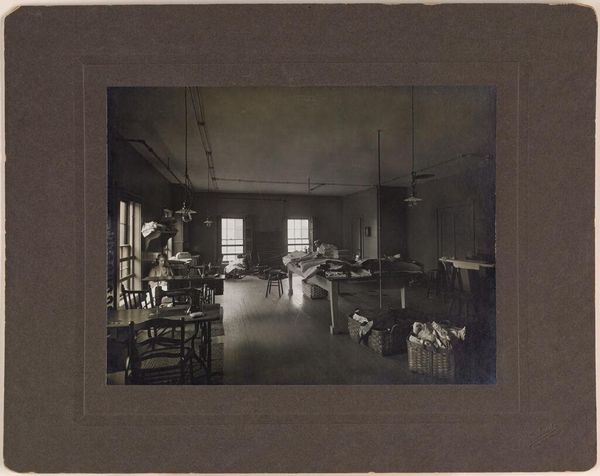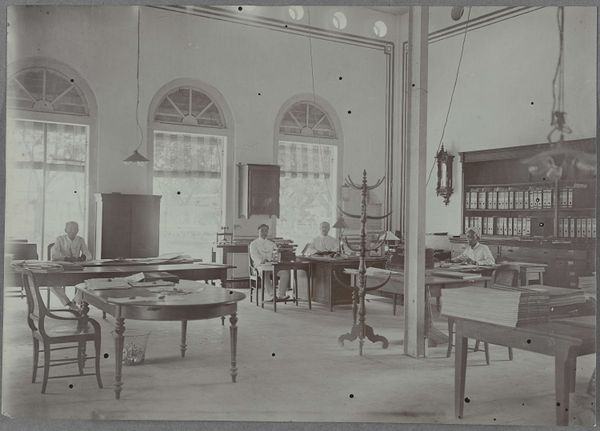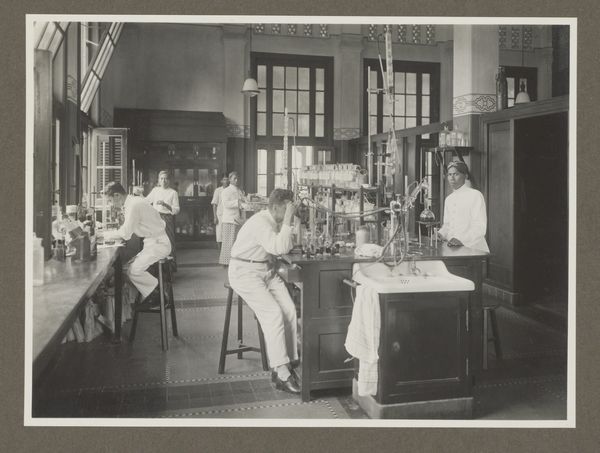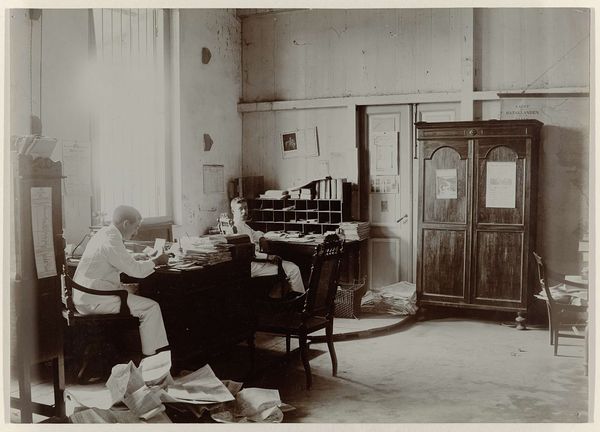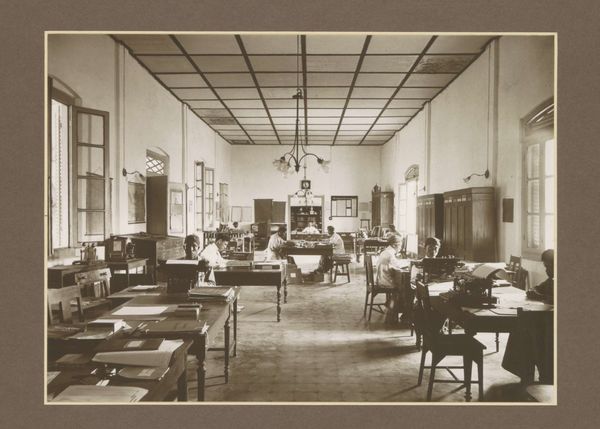
#
simple decoration style
#
wedding photograph
#
photo restoration
#
wedding promotion
#
wedding photography
#
archive photography
#
historical photography
#
framed image
#
home decor
#
19th century
Dimensions: height 210 mm, width 293 mm
Copyright: Rijks Museum: Open Domain
Curator: This photograph, believed to have been taken between 1908 and 1910, presents a space known as "Winkel van de Deli Courant". The name itself translates to "Shop of the Deli Courier". What impressions does it give you? Editor: Claustrophobia, instantly. All those stacks of paper; it feels heavy, burdened. You've got the weighty machinery under the table... and all these fellas dressed alike crammed in a space together. It seems so formal, despite the apparent business. What's being circulated? Curator: Indeed. The stacks of paper clearly allude to newsprint. These spaces represented centers of communication, echoing enlightenment ideals in rapidly industrializing societies. Those piles speak to accessibility of news, while hinting at who it *doesn’t* include. The framing emphasizes hierarchies, as it was probably taken during the Dutch colonial era in Indonesia. Note the bookcases as the background—knowledge and control visualized together. Editor: Absolutely. That industrial-scale table groaning under the news highlights the literal materiality. The men are almost anonymous, dressed practically in uniforms...It’s a powerful suggestion of controlled information dispersal. Those typewriters below the table almost feel like some subterranean creature churning this all out mechanically, not even human. What stories did they manufacture, and for whom? Curator: I’d say there is almost something godlike in the distribution of narratives here. Every character in the paper became a figure— a point for shaping the reality for their readers. They were essentially constructing cultural symbols within the space. What kind of symbolic architecture are they trying to propagate? Editor: Precisely! It all hinges on what those publications aimed to do. By emphasizing production—paper, ink, typewriters, and the white uniforms as part of the labor system— it highlights its artifice. These fellows are not so dissimilar to performers... staging news and molding narratives via their actions. I like your read on these hierarchies, visible not only through who holds authority in a visual scene. Curator: Thinking through how that space functioned gives one a new outlook regarding images of knowledge today, as symbols become fluid across media. Editor: Exactly. Deconstructing the labor and material culture on display really shakes assumptions about those old, sepia-toned ideals.
Comments
No comments
Be the first to comment and join the conversation on the ultimate creative platform.

